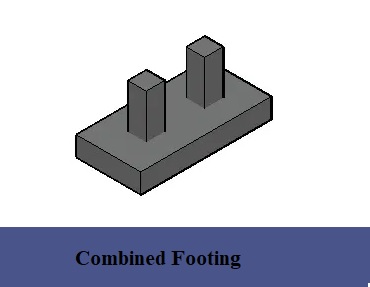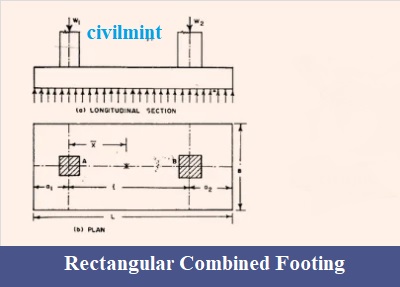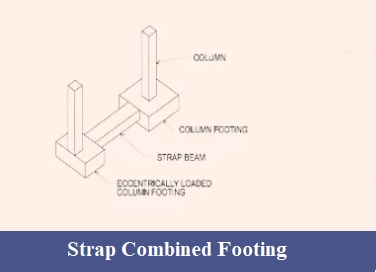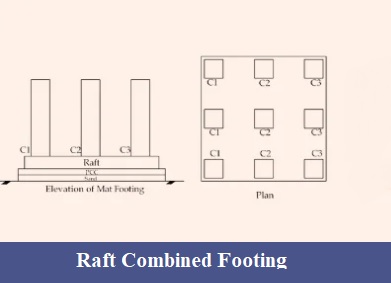In this type of footing, at least two columns are supported in a row and a common foundation is provided.

A combined footing is provided when the bearing capacity of the soil is low and required more surface area. Basically, It is made of reinforced cement concrete (R.C.C).
Combined footing distributes the load from the superstructure to the sub-soil. There are various factors on which foundation selection depends such as soil bearing capacity, building location, and types of building.
Table of Contents
Types of Combined Footing:
Normally, there are 4 types of combined footing used in the field of construction.
- Rectangular Combined Footing.
- Trapezoidal Combined Footing.
- Strap Combined Footing.
- Raft Combined Footing.
Here is a brief description of these types of footing.
1. Rectangular Combined Footing:

This is the most common type of combined footing used in the field of construction. Due to its rectangular shape, it is known as rectangular combined footing.
A combined footing is supported by two or more two columns. This type of footing provides equal distribution of load to the underlying soil.
2. Trapezoidal Combined Footing:

A trapezoidal combined footing is used to transfer unequal load from the superstructure to the underlying soil. This type of footing has a trapezoidal shape.
A trapezoidal combined footing is also supported by two or more columns but load distribution is unequal.
3. Strap Combined Footing:

Strap combined footing is provided when the column is very near to the property line. In this type of footing, columns are connected by a strap beam. The strap beam which connects spread footing does not transfer any load.
4. Raft Combined Footing:

Raft combined footing is provided when the soil has a low bearing capacity to bear the load of the superstructure. It protects against the tendency of overturning the building.
Normally, a raft foundation is required for multi-story buildings to transfer the huge quantity of load to relatively weak soil. It also prevents the sudden settlement of the building.
Advantages of Combined Footing:
- Combined footing can be constructed for a soil having low bearing capacity.
- Combined footing can transfer unequal load.
- This type of footing can be easily constructed even if the column is very close to the property line.
- Combined footing can maintain the center of gravity of the column
Disadvantages of Combined Footing:
- Sometimes the ground-water level is rise if we use combined footing.
- High ground-water level causes the loss of contact of soil with the foundation.
Uses of Combined Footing:
- Combined footing can be used when the column closes the property line and footing is not spread to the front of the property line then combined footing assist to construct the column.
- Combined footing can be constructed for a soil having low bearing capacity.
